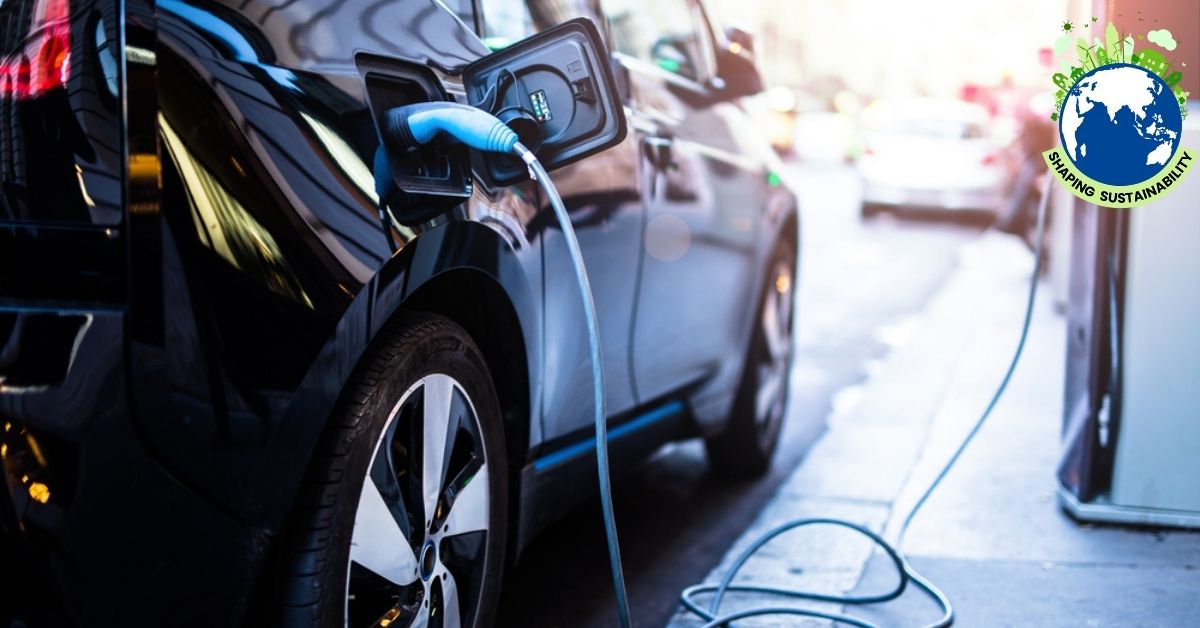Electric vs Petrol Vehicle: How The Purchase Will Affect Your Pocket in 10 Years
With petrol prices reaching three digits in the capital and diesel prices not far behind, here's the long term cost structure of buying an electric vehicle (EV) and an internal combustion engine vehicle (ICEV).

This article is part of a deep dive into Electric Vehicles in India. #EVinIndia is the first chapter of ‘Shaping Sustainability’, an exclusive series by The Better India to give our readers an in-depth understanding of how Indians are making sustainability a priority in all walks of life. Find more stories from the series, here.
Petrol and diesel prices have increased the number of digits and could soon hurt pockets. As this article is being written, it is pretty evident that there is much talk about how every stock market trader should consider investing in stocks relevant to the electric vehicle (EV) sector.
For those uninitiated with the EV industry, here is some background. EVs seemed too far into the future a decade ago, but the Internal Combustion Vehicles (ICEVs) face a market share blow from the electrified competition. The common diesel and petrol vehicles come under the category of an ICEV.
But it is time for everyone to know the real numbers that affect your pocket.
Since EVs are currently feasible only in the metros or cities, we consider only these areas as a bottom line for comparison purposes. In most cities, petrol prices have hit the century mark whereas diesel is only less than Rs 10 short of the mark.
Assuming that EVs are mainly charged at homes, let’s consider the facts. The higher end of price per unit of electricity for residential consumers can range between Rs 7 and Rs 9. Depending on the state and previous consumption billing, the price could lower even further.
Could the price of electricity go up in the same manner as oil? It is improbable that electricity prices will shoot up like petrol or diesel, as the energy portfolio for India is shifting towards less import-dependent renewable energy sources. Moreover, with solar and wind increasing their market share yearly and low tariffs driving the market, electricity prices may not witness such an upsurge. Hence, an individual weighing in the statistics can easily take a calculated bet on electric fuel prices remaining low.
The Numbers: EVs vs ICEVs
To compare the mileage, it is essential to fix the scenario and look at the numbers on even grounds. We choose the Tata Nexon for this article because the same model is available in petrol, diesel and electric configurations, which makes this theoretical comparison easier.
In the capital, the price for diesel as of 11 August 2021 stood at Rs 89.87, whereas petrol stood at Rs 101.84. Taking the worst-case scenario for electric power tariffs, the charge for non-domestic purposes above 3kVA contract load stood at Rs 8.50 per unit.
Since the comparison is between the types of vehicles and not the features, the comparison will focus on the basic variants of the vehicle available in both electric and ICE versions. Having considered the RTO, insurance, warranty, AMC charges along with the ex-showroom price, the base model of the ICEV (The Tata Nexon) in diesel is approximately Rs 11,30,000. In contrast, the same is Rs 8,60,000 with a petrol engine. The Nexon EV version starts at approximately Rs 14,70,000.
The Automotive Research Association of India (ARAI) certified mileage for the vehicle claims to give nearly 21 kilometres to the litre for the diesel version and 17 for the petrol. If we take this claim at face value (as real-life performance will rarely be higher than this), with the current fuel prices, the calculations add up to Rs 4.2 per kilometre for the diesel version and Rs 5.7 for the petrol.
The EV variant has a battery capacity of 30 kWh, or in other words, the charging capacity is 30 units of electricity. A full charge is expected to provide an ideal driving range of 312 kilometres. At this rate, the fuel cost is approximately Rs 0.8 per kilometre.
This is ‘ideal’ and will rarely match up to the real world. But even if we cut the range in half, considering ageing batteries and imperfect maintenance, it is significantly lower in costs per kilometre.
The fuel costs for the ICEVs are at least three times (if not five times) greater than the EV. However, assuming that the petrol and diesel rates remain steady, the nearly Rs 4-5 Lakh difference between the on-road price of the vehicles is expected to be made up within 1,25,000 kilometres (approximately 10 years, considering an average of 10,000 km driven per year).
This means after 1,25,000 kilometres your EV would essentially cost five times less than an ICEV to operate, including maintenance.
Insurance is a major factor and stumbling block here. While purchasing the insurance for the diesel variant, it is observed that the charges are 1.2 times the same for the petrol vehicle, and it further increases to 1.9 times when it comes to the EV.
Although current insurance policy structures may present higher costs for EVs, it is highly likely that to ensure greater EV feasibility and government interventions may show a downtrend in this area.

As seen from the graph, owing to low electricity prices, the overall operational life costs of an EV remains fairly lower than a petrol or diesel engine vehicle. Around the 1,00,000 kilometres mark, an EV should operate at a much more viable cost than ICEVs.
Fueling and Charging Infrastructure
The common concern among prospective car buyers is the charging infrastructure. The charging infrastructure required for enabling mass EV adoption is still in the process of construction. For ICEVs, going on a road trip to a remote destination or driving around the city would require no forethought on the fuel tank. However, driving the EV out of the garage requires more thought on the schedule, distance to be travelled, charging station availability, and battery charge status.
The willingness of the common public to buy an EV over an ICEV may significantly run not only on the lines of costs but also on the availability of charging infrastructure.
The 2030 Electric Mobility targets set up by the Government of India depends on public and private involvement in ramping up the number of charging stations. By the end of 2019, India had over 78,000 fueling stations, of which 32 per cent were in rural areas and the remaining across urban areas and highways.
The Society of Manufacturers of Electric Vehicles, an EV industry body, reported that as of March 2021, India had only 1,800 charging stations for some 16,000 electric cars. The Grant Thornton Bharat-FICCI report further added that for India to reach a market target of 2 million EVs by 2026, the number of charging stations would need to range above 4,00,000.
The Centre is also pushing the EV adoption rate by earmarking Rs 1,000 crore under the Rs 10,000 crore FAME II Scheme for building the charging infrastructure. Under FAME II, 1633 fast chargers and 1003 slow chargers have already been sanctioned. The EESL, which is at the forefront of scaling up the charging infrastructure, has confidence that demand aggregation can bring down the per-unit cost of the charging equipment by 15-20 per cent.
Overall, the scenario looks to be in favour of EVs going forward. Even if the charging infrastructure is currently only available in a few selected areas, the future is poised to tilt in favour of EVs with the Government pushing through FAME I and FAME II.
Batteries
Analogous to a fuel tank, batteries play a vital role in the adoption of EVs. Technology has come a long way but has still more to go. Batteries used in today’s EVs have been made more compact and can hold more energy density than their predecessors. EV batteries were initially made of lithium-ion, which is highly explosive in nature. This has now moved on to lithium polymer-based compounds. They are less explosive and hold fast charging capabilities.
But the other anchor holding down the EV segment is the cost of batteries. They remain to be one of the most expensive components to be built into an EV.
While batteries weigh in high input costs for the manufacturer, it also decides the range and charging speed of the vehicle. Some batteries allow fast-charging up to around 80 per cent of the battery capacity and then follow slow charging upto full capacity. The technology is still evolving and venturing into organic compounds. The utilisation of organic sources can help reduce the end waste generated during the disposal of lithium batteries.
Lithium batteries need to be carefully recycled to ensure they do not pose any toxic threat to the environment. With the global EV adoption rate rapidly increasing, many researchers have put in their time to bring new developments. This is a major ethical concern for new buyers that needs addressing.
Most EV brands give warranties on batteries, and these components have a lifespan ranging above 10 years. Depending on the usage and charging characteristics, the life can be extended further. Considerably, the sector may evolve so rapidly that battery swapping technologies may step in, which would require a global charging protocol to be put in place.
Environmental Impact
The real environmental impact can only be assessed on the data available. For example, upto 2018, the Carbon Emissions factor for the Indian Power sector stood at 0.82 kg/kWh, which implies that 0.82 kilograms of Carbon Dioxide were emitted for every unit of electricity produced.
With specifics mentioned earlier, a 30kWh battery capacity and a range of 312 kilometres should result in 0.07 kg/km or 0.07 kilograms of carbon dioxide is emitted per kilometre.
While comparing the same with the GHG emissions for road transport report published by the Shakti Foundation, a petrol engine of less than 1400 cc has an emission factor between 0.130 and 0.140 kg/km. In contrast, a diesel engine of the same size has a factor in the range of 0.117 kg/km.

As observed in the graph, the carbon emissions over the operational life are vast. The EV emissions are nearly half of the ICEVs. And the carbon emission factor is yet to be updated following the integration of huge renewable capacities added in the last few years. The current carbon emissions factor for the Indian Power sector should be much lower than the one reported in 2018, and the environmental impact of an EV should be significantly better.
Ride Experience
Have you heard the noise made by an EV? It is practically silent. There are rumours that many EV manufacturers incorporate sound in the engines to let pedestrians know that a vehicle is approaching. But more than that, sitting inside an electric car gives a different ambience. Do you have that friend who jerks the car every time they change gears? Or takes much time to get the car moving on a slope? Electric cars have no such troubles.
Or are you the sporty one who fancies the time taken to go from 0 to 100 kmph? Electric cars can give you the experience of high torque on accelerating from standing still. It is evidently a thrilling experience to receive high torque when you put the pedal to the mettle. Other than that, you have the chance to listen to music without having to listen to the engine roar.
Electric cars generally come with more IoT features compared to their counterparts. Some even allow the user to enable a dog mode and others allow you to stream Netflix while charging. Ever had to wait while your significant other goes shopping and takes forever? Time to get an electric car and chill in the parking lot, catching up on some movies and shows you have been waiting to watch.
Your Contribution
Should you opt for an electric vehicle on your next purchase, you are significantly contributing to many aspects — one, the growth of the national market and two, to the environment. Being an EV consumer, you ensure that the Indian Vehicle market is moving towards being a global competitor. At the moment, China holds the largest market share when it comes to EV manufacturing. Owing to many recent developments, many global firms are looking to move their base to India. This will create employment opportunities and shift labour skills from a conventional sector to a new and future-ready sector.
On the other hand, the contribution towards the betterment of the environment is significant.
Although there is much effort to decarbonise the Indian Power sector, the ambitious renewable energy targets have shown that there is a roadmap to ensure that electricity production in India will be carbon neutral soon. Running your vehicle on a cleaner form of energy can bring much relief to an environment that is fast showing signs of disasters. With a huge population that relies heavily on road transport, being a part of the change can mean doing much for the environment and future generations.
(Written by Siddharth Shetty; Edited by Vinayak Hegde)
This story made me
- 97
- 121
- 89
- 167
Tell Us More
We bring stories straight from the heart of India, to inspire millions and create a wave of impact. Our positive movement is growing bigger everyday, and we would love for you to join it.
Please contribute whatever you can, every little penny helps our team in bringing you more stories that support dreams and spread hope.



















